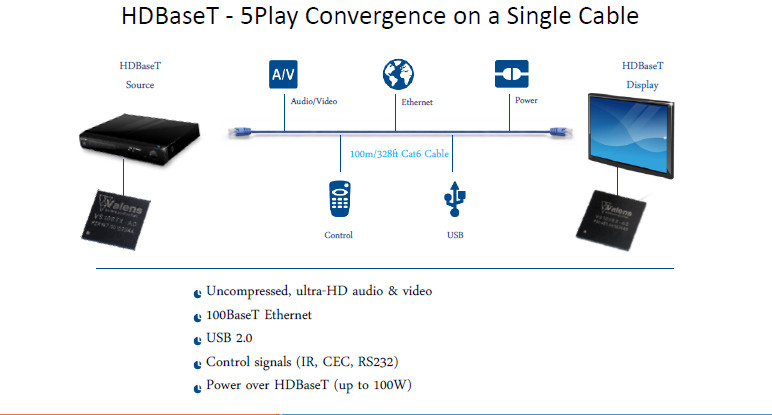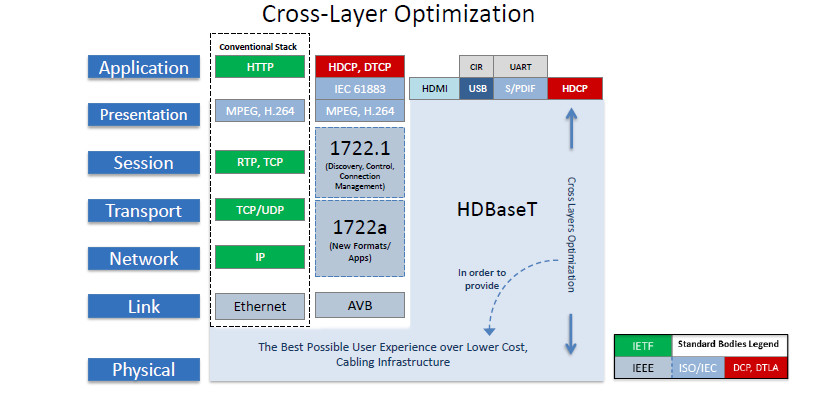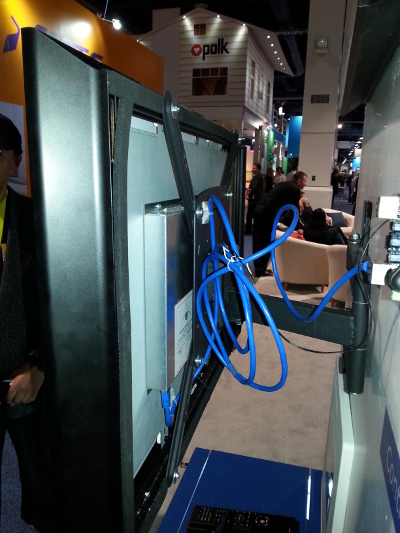At CES 2015, the HDBaseT Alliance announced that the HDBaseT Specifications 1.1.0 and 2.0 have been approved by the IEEE Standards Association (IEEE-SA) Standards Board for adoption as part of the organization’s standard portfolio. The HDBaseT standard will become IEEE 1911 standard, once the adoption process is complete. This is a significant endorsement of the technology that has been developed by Israeli-based Valens and adopted by dozens of companies.
HDBaseT is an Ethernet-based protocol that allows delivery of video, audio, control, data and power over CAT 5 and 6 cable – including support for 4K/30 video. The highest level of implementation can deliver 4K video up to 100m on CAT 6 cable and 100W of power.

“This collaboration with the IEEE is a major milestone for HDBaseT and for the Alliance, as the IEEE is one of the leading standards organizations in the world”, said Ariel Sobelman, president, HDBaseT Alliance. “The adoption by IEEE will help enhance HDBaseT’s impact and influence in today’s connected world”.
HDBaseT is compatible with a standard Ethernet network and can run Ethernet data, but it is much more. The structure is shown below.

Many of the professional and home-based AV solutions using HDBaseT and CAT 5/6 cable will require very high quality video delivery. That means robust delivery with no glitches and low latency. Regular Ethernet LANs transmit video in bursts. Every delivery system has losses, but in an Ethernet architecture, the receive end requests a retransmission of the data if a missing packet is detected. This requires memory and induces latency.
The HDBaseT architecture is centered around an “All Delivered” (AD) understanding, which means all packets are accepted at the sink device. AD networks allow reservation of bandwidth and can assign different transfer quality levels to elements of the transmission. That means the packet headers can be transferred with high error resistance while the payload packets carry normal error resistance. This effectively increase the Bit Error Rate from 10^-9 to 10^-18.
In their booth at CES, HDBaseT showed a number of demonstrations of connectivity. One was a demonstration of using HDBaseT as a KVM (Keyboard, Video and Mouse) demo to switch the content from two remote PCs to a local display monitor. Another showed the distribution of 4K content over 600m of single mode fiber cable. One we had not seen was an in-home demo. The schematic below shows the architecture of the solution. One 47” TV was shown in the booth connected with a single CAT6 cable that provide power, video, audio and control.


